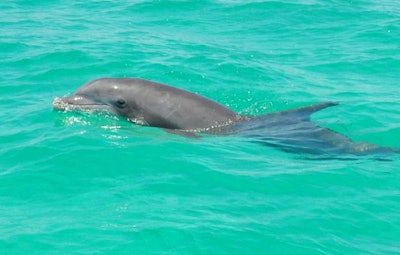
Avian influenza was detected for the first time in an American cetacean on September 7 after the virus was confirmed in a bottlenose dolphin in Florida.
According to University of Florida (UF) Health, the young male dolphin was recovered in March and tested positive for clade 2.3.4.4.b of the Eurasian H5 viral lineage. The dolphin likely got infected by interacting with a wild bird carrying the virus.
“While obviously the presence of HPAI is a concern, the key takeaway for us is that additional caution should be taken by those handling or encountering wild dolphins during rescue events or while performing necropsies,” said Mike Walsh, DVM, a clinical associate professor with UF’s College of Veterinary Medicine who leads the animal rescue team and performed the dolphin’s necropsy with others.
So far in 2022, HPAI has been confirmed in 2022 in commercial poultry in the states of Ohio, Utah, California, Michigan, Wisconsin, Oklahoma, Minnesota, North Dakota, South Dakota, Nebraska, Kansas, Iowa, Missouri, Kentucky, Indiana, Colorado, North Carolina, Pennsylvania, Delaware and Maryland. The virus has also been found in commercial game bird operations in Texas, New York and South Dakota.
The virus primarily impacts wild birds and domesticated poultry, but rarely infects people.
This is only the second known case in the world of a dolphin infected with highly pathogenic avian influenza (HPAI). The Canadian Wildlife Health Cooperative (CWHC) recently confirmed that a female black bear euthanized in June tested positive for the H5N1 variant of HPAI.
“The virus has some features that make further study and follow-up on mammalian cases important, but the virus does not currently contain the features we know are required for transmission between humans and likely other mammalian hosts,” explained Richard Webby, PhD, who directs the World Health Organization Collaborating Center for Studies on the Ecology of Influenza in Animals and Birds at St. Jude’s Children’s Research Hospital.
“In addition, the recent discovery of HPAIV in a porpoise in Sweden almost certainly suggests that the Florida dolphin finding isn’t a one-off, unique event.”
HPAI cases have also been reported in other species of mammals in Canada in 2022, according to the World Organization for Animal Health (WOAH) website. Those include red foxes, skunks, an American mink and a harbor seal.
To learn more about HPAI cases in North American commercial poultry flocks, see an interactive map on WATTPoultry.com.
Read our ongoing coverage of the global avian influenza outbreak.

















